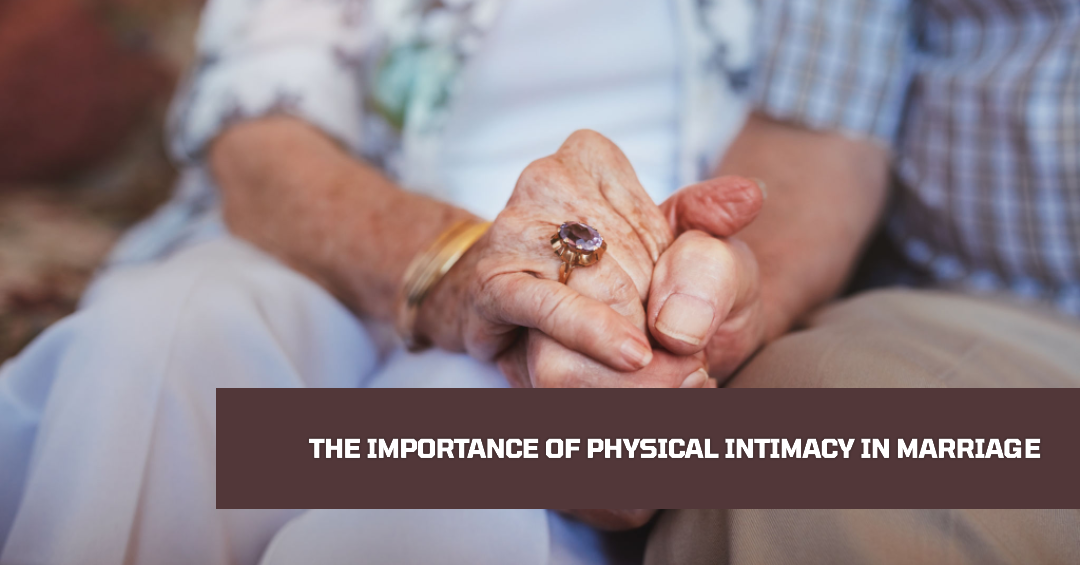Physical intimacy plays a crucial role in a healthy and fulfilling marriage. It is not just about the act of sex but encompasses a range of affectionate and intimate gestures that strengthen the emotional bond between partners. This article explores the significance of physical intimacy in marriage, highlighting its benefits, challenges, and ways to nurture it.
Table of Contents
Understanding Physical Intimacy
Physical intimacy involves various forms of touch, including cuddling, kissing, holding hands, and sexual intercourse. It serves as a powerful means of expressing love, desire, and vulnerability within a marital relationship. Physical intimacy encompasses both emotional and physical aspects, allowing couples to connect on a deeper level.
Emotional Connection through Physical Touch
Physical intimacy creates a strong emotional connection between partners. The act of touching releases oxytocin, commonly known as the “love hormone,” which promotes bonding and feelings of affection. Regular physical contact fosters a sense of security, reassurance, and closeness, strengthening the emotional bond between spouses.
Enhanced Communication and Trust
Engaging in physical intimacy requires open communication and trust. It encourages couples to express their desires, needs, and boundaries, fostering a deeper understanding of each other. Through physical connection, partners learn to listen, interpret non-verbal cues, and respond to each other’s desires, leading to improved communication both in and out of the bedroom.
Stress Relief and Emotional Well-being
Physical intimacy acts as a stress reliever and enhances emotional well-being. Intimate touch triggers the release of endorphins, which reduce stress and promote a sense of happiness and relaxation. Regular physical intimacy helps alleviate tension, fosters emotional connection, and strengthens the marital bond.
Physical Intimacy as a Pillar of Marriage
Physical intimacy forms a crucial pillar of a healthy and fulfilling marriage. It serves as an expression of love, passion, and desire between partners. It brings spouses closer together, helping them navigate challenges, celebrate joyous moments, and maintain a strong emotional connection throughout their married life.
Challenges to Physical Intimacy
Despite its importance, physical intimacy can face challenges within a marriage. Factors such as stress, fatigue, work pressures, hormonal changes, and relationship conflicts can affect the frequency and quality of physical intimacy. Understanding and addressing these challenges is essential for maintaining a healthy and satisfying physical relationship.
Overcoming Challenges: Open Communication
Open communication is vital in overcoming challenges to physical intimacy. Couples should create a safe space to discuss their needs, desires, and concerns openly. By addressing issues together, partners can find solutions, compromise, and work towards a mutually satisfying physical relationship.
Prioritizing Physical Intimacy in Marriage
To maintain a strong physical connection, couples need to prioritize physical intimacy in their daily lives. Allocating quality time for each other, planning date nights, and engaging in affectionate gestures can reignite the passion and keep the spark alive in the marriage.
Exploring New Experiences Together
Continuing to explore new experiences together can revitalize physical intimacy. Trying new activities, experimenting with different techniques, or introducing variety into the bedroom can reignite passion and deepen the emotional connection between partners.
Respecting Boundaries and Consent
Respecting boundaries and seeking consent are essential aspects of physical intimacy. Partners should communicate and establish clear boundaries, ensuring that both individuals feel comfortable and safe. Respecting each other’s limits fosters trust and enhances the overall experience of physical intimacy.
Intimacy Outside the Bedroom
Physical intimacy should extend beyond the bedroom. Simple acts of affection, such as hugging, holding hands, and offering massages, strengthen the emotional bond and reinforce the connection between partners throughout their daily lives.
Maintaining Intimacy in Long-Term Relationships
Sustaining physical intimacy in long-term relationships requires effort and adaptability. Couples should recognize the changes that occur over time, both physically and emotionally, and find ways to adapt to these changes. Open dialogue, understanding, and a willingness to explore new avenues of physical connection can help maintain intimacy throughout the years.
Seeking Professional Help when Needed
In cases where challenges to physical intimacy persist, seeking professional help can be beneficial. Relationship therapists or sex therapists can provide guidance, support, and strategies to overcome specific issues and restore physical intimacy within the marriage.
Embracing Physical Intimacy for a Stronger Marriage
Embracing physical intimacy as an integral part of marriage leads to a stronger, more fulfilling relationship. By prioritizing open communication, mutual respect, and ongoing exploration, couples can foster a deep emotional bond, strengthen their connection, and experience the benefits of physical intimacy throughout their married life.
Conclusion
Physical intimacy holds immense importance in a marriage, serving as a means of emotional connection, communication, and pleasure between partners. By acknowledging its significance and actively nurturing physical intimacy, couples can experience a stronger, more fulfilling relationship.
FAQs
-
How can physical intimacy improve the emotional connection between partners?
Physical intimacy involves touch, which releases oxytocin and promotes emotional bonding between partners. Regular physical contact fosters a sense of security, reassurance, and closeness, strengthening the emotional connection.
-
What are some common challenges to physical intimacy in marriage?
Common challenges include stress, fatigue, work pressures, hormonal changes, and relationship conflicts. These factors can affect the frequency and quality of physical intimacy.
-
How can couples overcome challenges to physical intimacy?
Open communication is vital in overcoming challenges to physical intimacy. Couples should create a safe space to discuss their needs, desires, and concerns openly and work towards solutions together.
-
Is physical intimacy only about sexual intercourse?
No, physical intimacy encompasses various forms of touch, including cuddling, kissing, holding hands, and other affectionate gestures. It is not solely focused on sexual intercourse.
-
Can physical intimacy be maintained in long-term relationships?
Yes, physical intimacy can be maintained in long-term relationships through open dialogue, adaptability, and a willingness to explore new experiences together.
Continue to prioritize physical intimacy in your marriage and experience the transformative power it holds. Invest in the love you share, and let the beauty of physical intimacy shape your journey together.
To learn more about cultivating a strong and fulfilling marriage, explore our collection of articles that delve into various aspects of relationships and intimacy. Click here to access valuable insights and guidance to further enhance your marital bond.
Remember, the power to create a loving and passionate marriage through physical intimacy lies within your hands. Embrace it, nurture it, and watch as your relationship blossoms into a lifelong love story.













Leave a Reply
View Comments